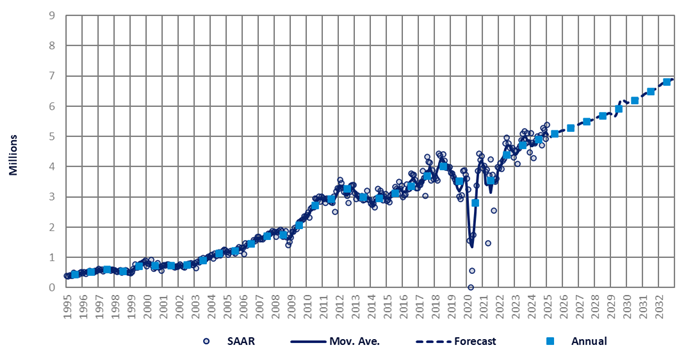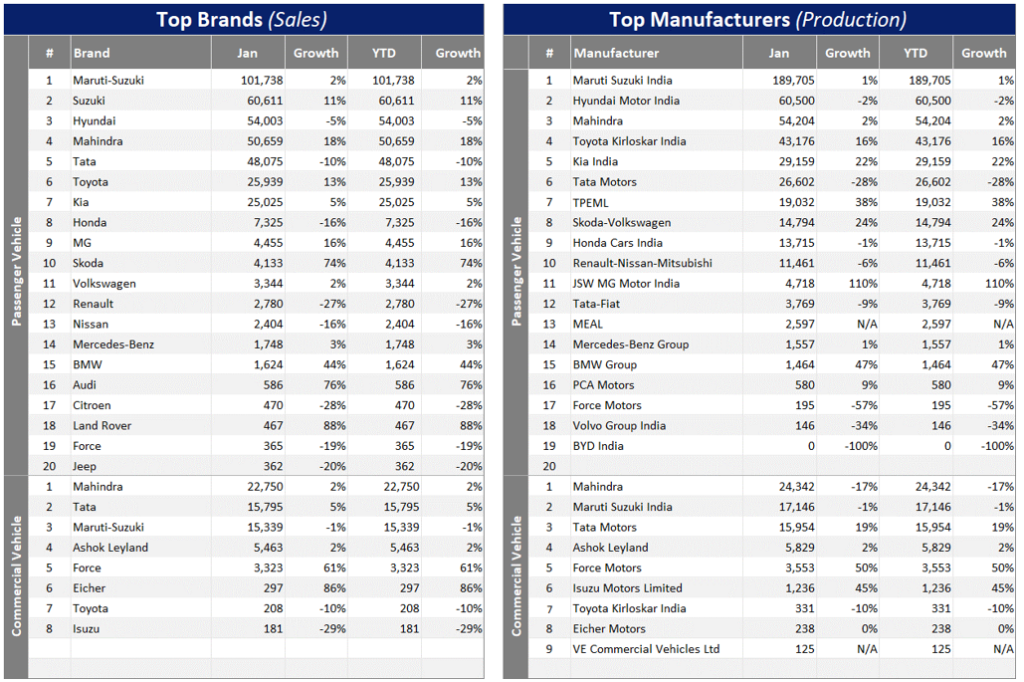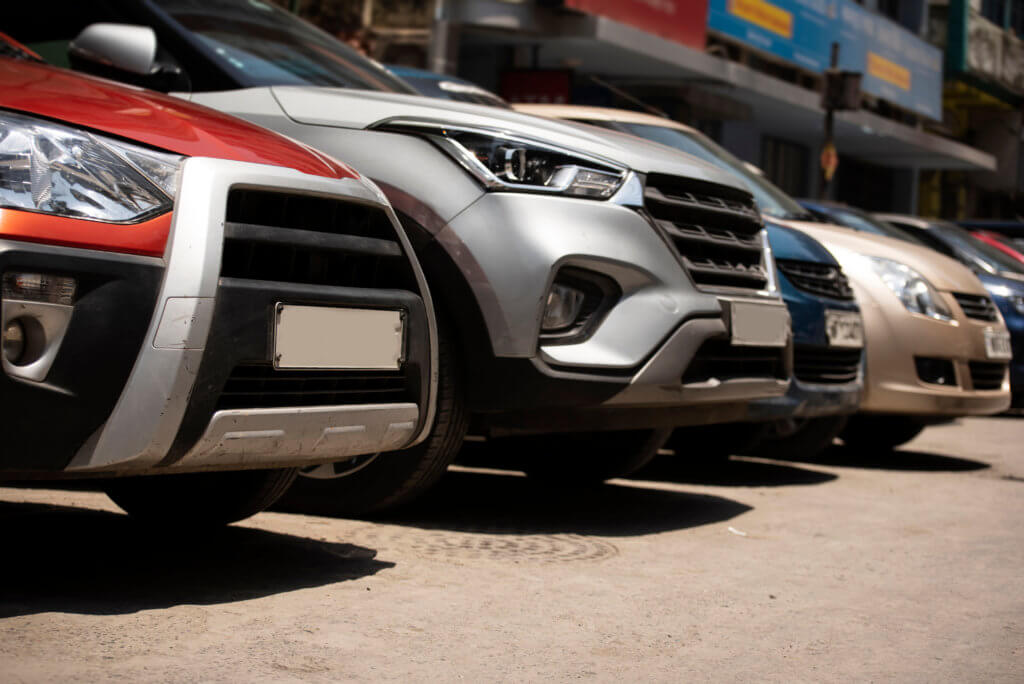After achieving record sales in 2024, the Indian Light Vehicle (LV) market has started the New Year with strong momentum. The January sales rate soared to an unprecedented high of 5.4 million units/year, marking an increase of nearly 10% from a robust December.

In year-on-year (YoY) terms, LV wholesales rose by 3% to 460k units in January 2025. This figure also represents a 25% month-on-month (MoM) increase. Passenger Vehicle (PV) volumes climbed by 26% MoM and 3% YoY, reaching 397k units, while sales of Light Commercial Vehicles (LCVs) with a gross vehicle weight of up to 6T surged by 20% MoM and 4% YoY to 63k units.

PV wholesales rebounded following the destocking exercise at the end of 2024, with each of the top five automakers reporting improved figures. The most significant MoM rises were observed by Suzuki Group, Hyundai, and Mahindra.
Moreover, retail sales of PVs and LCVs surged to 522k units in January, up by a substantial 57% MoM, according to data from the Federation of Automobile Dealers Associations (FADA). However, FADA cautioned that “some of that spike stems from December purchases registered in January to gain a ‘2025 model year’ advantage.”
PV inventory levels decreased by approximately five days to 50-55 days in January, compared to 55-60 days at the end of December 2024 and a peak of 80-85 days in September. Aggressive discounts and incentives at the end of 2024 also facilitated stock clearance.
Preliminary data for February suggests a subdued performance. PV wholesales for market leader Suzuki Group fell by 8% MoM and increased by a mere 1% YoY. Hyundai’s volumes declined by 12% MoM and 5% YoY, while Mahindra maintained its figures on a MoM basis, with its sales rising by 19% YoY. In addition, Tata Motors’ PV sales slipped by 3% MoM and 9% YoY. In contrast, Toyota (primarily PVs) showed improvement, with its sales rising by 1% MoM and 13% YoY in February.

US Tariffs are shifting - will you react or anticipate?
Don’t let policy changes catch you off guard. Stay proactive with real-time data and expert analysis.
By GlobalDataBased on the positive outlook for SUVs and Electric Vehicles (EVs), as well as stronger-than-expected January results coupled with a recovery in rural demand, we have made minor upward adjustments to the sales forecast for the next few years.
We now anticipate that India’s LV sales in 2025 will grow by 4% and surpass the 5 million-unit mark for the first time in the market’s history.
At the Bharat Mobility Global Expo 2025, the major new launches were SUVs, with a particular focus on Battery Electric Vehicles (BEVs). The most notable highlights included the Hyundai Creta BEV, which debuted at the Expo, and the upcoming Suzuki e Vitara. The Skoda Kylaq and the Kia Syros SUVs also made their market debuts. These new models and updates are expected to bolster sales this year.
Another positive factor supporting the market is government policy. The recently announced 2025-26 Union Budget includes income tax reductions for the middle class, which could potentially motivate undecided vehicle buyers to finalize their purchase decisions in the coming months.
On the monetary front, the Reserve Bank of India, under the new governor, has reduced its benchmark interest rate for the first time in almost five years (from 6.5% to 6.25%), despite a record-low rupee contributing to inflationary pressures. The bank’s focus has clearly shifted from inflation to economic growth, as the economy continued to decelerate through Q3 2024. Further rate cuts are possible and would support consumer spending.
On the downside, higher vehicle prices are likely to continue to impede sales, particularly for entry-level models aimed at first-time buyers. In the broader economic context, India may not become the direct target of US President Trump’s elevated tariffs but could be indirectly affected if the global economy decelerates.


This article was first published on GlobalData’s dedicated research platform, the Automotive Intelligence Center.




